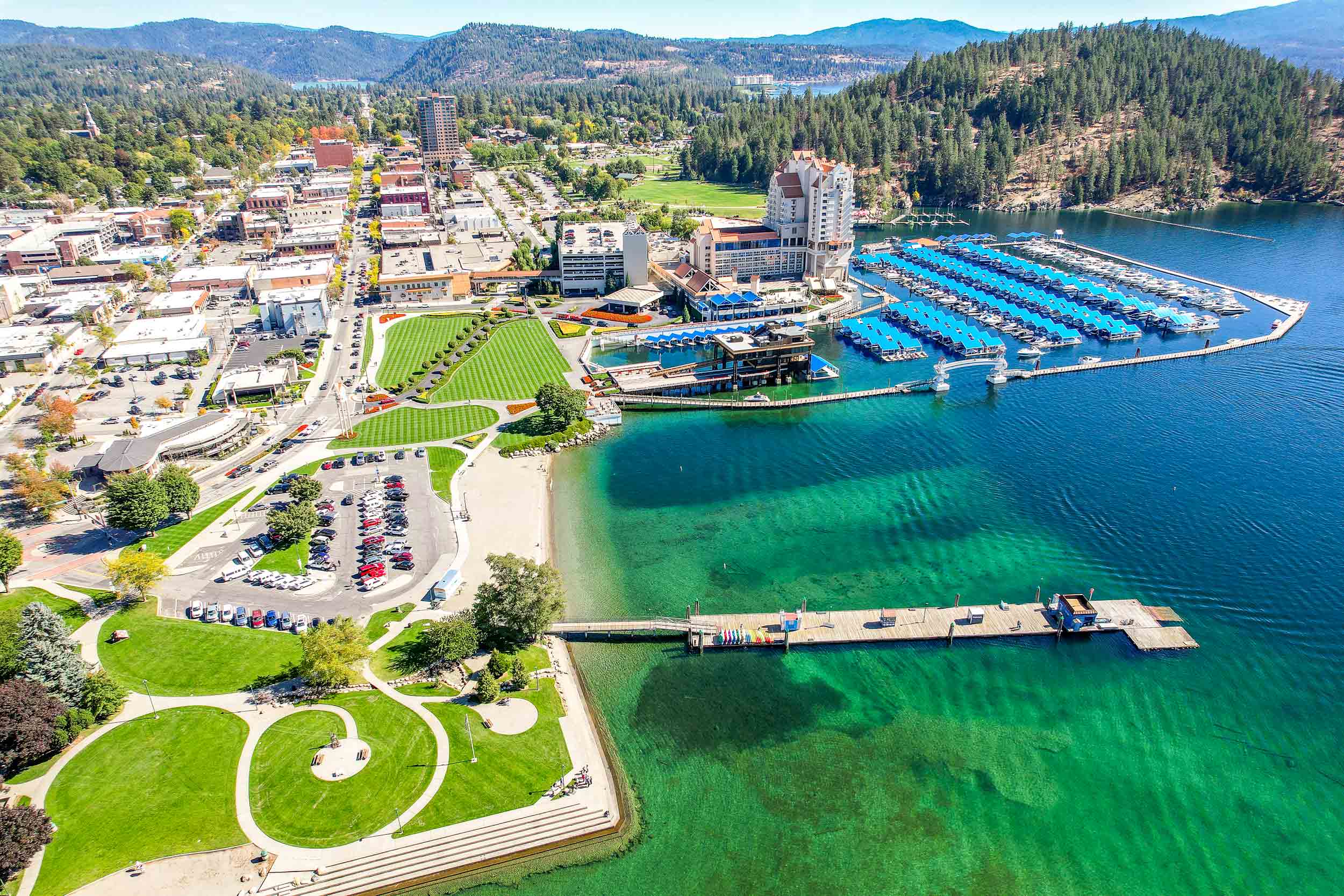The information in this article was originally posted on https://www.kmpo.net/huetter-corridor-study/
“KMPO has studied the potential for a north-south roadway between US Highway 95 and State Highway 41 to serve existing traffic and future transportation growth on the Rathdrum Prairie and meet regional mobility needs. Previous studies and current development patterns within Kootenai County and the Cities of Rathdrum, Post Falls, Coeur d?Alene, and Hayden have identified significant increases for future travel demand within the study area.
Specifically, projected growth within the area will result in future capacity issues on the existing transportation network and require preservation of right of way for future roadway facilities. This report presents the Right of Way Needs Map prepared for the Huetter Corridor Study.“
[“Huetter Corridor Study”]
V. RIGHT OF WAY NEEDS MAP IMPLEMENTATION
This section presents the adopted Right of Way Needs Map and the implementation process for right of way preservation. As previously stated, the purpose of the Right of Way Needs Map work is to identify the future transportation facility right of way needs along the Preferred Alignment as determined by the project?s purpose and need.
Figure 23 provides the adopted Right of Way Needs Map. Kootenai Metropolitan Planning Organization adopted the map on August 2, 2007. The map is also included in the Kootenai County Metropolitan Transportation Plan 2007 ? 2030 (KMPO, October 2007). The Corridor route follows and occupies the existing Huetter Road right of way and parallels the Spokane International and Union Pacific Railroad right of way connecting Interstate 90 to US Highway 95 at State Highway 53.
The right of way footprint provides for a High-Speed, Type V, grade-separated facility with a parallel Frontage Road and pedestrian and bicycle trail. Interchanges are located at Interstate 90, at each major intersecting arterial between Poleline and Lancaster Avenues, and at the State Highway 53 and US Highway 95 junction.
It is anticipated that the expressway portion of the Corridor will be developed as a sub-grade facility, approximately 25 feet below the existing ground surface. The intent of the sub-grade facility is to provide for noise attenuation, to lessen the visual impacts of the facility, and to minimize changes to the vertical alignments of existing cross streets.
Huetter Road would serve as the north and south local access frontage road with generally three travel lanes except at the intersecting arterials where the footprint would include up to five lanes. All intersecting arterials are planned as five lane roadways.
RIGHT OF WAY PRESERVATION PROCESS
It is anticipated that a combination of building setback requirements, zoning requirements, access requirements, right of way dedication through annexation and site development or redevelopment, and property acquisition will be needed to secure the Corridor for the future.
Approval and adoption of the right of way needs map by the Kootenai Metropolitan Planning Organization, Highway Districts, Kootenai County, and cities (Post Falls, Rathdrum, Hayden, and Coeur d?Alene) assures its place in the planning process. At a minimum, the map can be used in an advisory capacity for local jurisdictions when working with developers.
It is recommended, however, that local agencies adopt the map as part of the jurisdiction?s planning documents, in order to require that developers set aside land to meet future transportation facility needs.
The following land use proposals should trigger a right of way preservation action by local jurisdictions:
- Annexation
- Subdivision
- Planned Unit Developments
- Commercial or Industrial Development
- Zone Change

Dedication of right of way or granting of a permanent right of way easement is recommended as a condition of each of the above proposals.
Jurisdictions may wish to allow property within the Corridor right of way footprint to be used as interim open space for a subdivision development and designated as an easement until needed for roadway improvements. When the Corridor improvement project moves forward, the easement area could be dedicated as right of way at that time. This would allow the easement area to remain under the care of the underlying property owner until the Corridor project would be constructed.
Jurisdictions may wish to consider the provision of bonus densities, other incentives (setback variances, variances on uses), or a reduction in property value for tax purposes to offset perceived impacts of the dedication or easement.
Properties that develop or redevelop should be reviewed for corridor facility orientation, location of streets and accesses that may impact the facility footprint, and appropriate setbacks based on the proposed right of way footprint. Consideration should also be given to the location of pedestrian and bicycle facilities so that connections to the future Huetter pedestrian and bicycle trail are anticipated.
HUETTER CORRIDOR – NEXT STEPS
Preserving the right of way for transportation facilities is addressing future infrastructure needs and assuring that those projects can be constructed through careful coordination of both existing and future land uses. By a coordinated approach, public costs are lessened, the study and project steps are in compliance with state and federal requirements, the project becomes eligible for public funding, and the general public is well served through coordinated efforts.
Adoption of the Report and Right of Preservation Map by the Agencies Following adoption by the jurisdictions (Cities of Rathdrum, Post Falls, Coeur d?Alene, and Hayden; Post Falls and Lakes Highway Districts, Kootenai County, and the Idaho Transportation Department), the study and map would be appended to their existing planning or transportation documents. Jurisdictions may also adopt the document as a standalone document.
Right of Way Preservation
Upon adoption, jurisdictions can then require dedication of right of way or permanent easement associated with land use or permitting actions as a condition of approval or requirement.
Alternatives and Environmental Analyses
Through an iterative process, design considerations and environmental impacts will be used to refine the facility design and any subsequent mitigation of the project.
- Preliminary Environmental Evaluations ? Performance of cursory environment evaluations to:
- Examine potential individual and cumulative project impacts to the environment.
- Aid in determining environmental documentation type.
- Complete environmental evaluations for inclusion into the determined environmental document(s).
- Alternatives Analysis ? As required by NEPA, analyze probable alternatives and select a preferred alternative. The analysis of alternatives completed through previous Purpose and Need and right of way preservation work efforts can serve as a ?pre-screening? of alternatives and be used to establish the basis of probable alternatives to be analyzed.
- Environmental Document Determination, Preparation, and Approval ? Following NEPA, FHWA, and ITD protocol, completion of an Environmental Evaluation, Environmental Assessment, or Environmental Impact Statement and receipt of the respective regulatory Categorical Exclusion, Finding of No Significant Impact, or Record of Decision approval.
Access Point Decision Report
Complete the required analyses and requirements for the FHWA process to achieve approval for the new facility connection to Interstate 90.
Right of Way Acquisition
Not all of the required right of way may be acquired prior to construction of the project. In these cases, right of way would need to be acquired to meet the facility needs. In advance of project preliminary and final design and environmental clearances, property may be acquired under protective acquisition or hardship buys.
Design
By phase, complete conceptual, preliminary, and final design; prepare construction documents; and solicit bids from construction contractors
Funding and Phasing
- Evaluation, selection, and secure funding to implement the project.
- Achieving a balance between need, available funds, and project phasing.
Construction
By phase, construct the project.
The complete text of the Huetter Corridor Right of Way Preservation Implementation Policy is in the Appendices of this report.
The information in this article was originally posted on https://www.kmpo.net/huetter-corridor-study/


